Document Management
Medical Records Scanning
Digitize your Medical Records with Shoreline Records
Medical records scanning services help practices, hospitals, and clinics add paper-based patient charts to Electronic Medical Record (EMR) and Electronic Health Record (EHR) systems. As more and more practices, hospitals, and clinics continue to implement EMR and EHR systems, they are confronted with the reality that scanning all of the legacy and day-forward patient chart information is often a bigger challenge than initially expected. Shoreline Records Management offers the experience and expertise to simplify this process. Our team of professionals can help with every step of the chart scanning process, including integration with your EMR/EHR software.
Get A Free Quote
Get A Free Quote
How Much Does it Cost to Scan Medical Records?

Once you decide to start your medical record scanning project, it’s crucial to get an idea of the total number of patient charts you want to scan. At Shoreline, we provide our pricing in terms of price per page, including all of the services relating to medical document scanning. Our services are based on three key factors:
1. THE TOTAL VOLUME OF PAGES TO BE SCANNED
2. THE AMOUNT OF DOCUMENT PREPARATION REQUIRED
3. THE NUMBER OF INDEX FIELDS REQUESTED
Shoreline’s Medical Records Scanning Process
Our proven eight-step approach empowers healthcare organizations to outsource patient chart scanning while operating efficiently and effectively. Drawing on over twenty years of experience, we proactively prevent and address many potential pitfalls that may occur during scanning. This proven methodology includes:
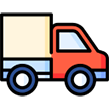
Step 1. Preparing the documents for transport
Our team of professionals will work with your staff to coordinate the boxing, preparation, and transportation of your medical records to our document scanning facility. We ensure continued access to your patient information throughout the process by barcoding every chart and every box sent out for scanning.
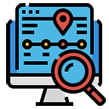
Step 2. Receipt of documents
Upon receiving patient charts at our facility, our team carefully takes inventory of your information and provides a detailed tracking manifest of the received information. This, in turn, enables quick and easy access to a patient chart if needed during the scanning process.
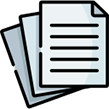
Step 3. Document preparation
Handling the most time-consuming part, our experts remove all staples and fasteners, repair any ripped or torn pages, and carefully sort out the different sections of a patient chart to ensure easy access to the required information.
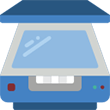
Step 4. Document scanning
Our production document scanning service center, equipped with leading-edge equipment from Kodak and Canon featuring Kofax VRS Technology, can capture all types of detailed information, from progress notes to diagnostic imaging results.
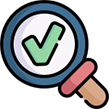
Step 5. Quality control
Ensuring readability and quality is crucial when scanning medical records. To achieve this, we review every image to guarantee quality, carefully analyzing each image to ensure that nothing is missed during the scanning process.

Step 6. Indexing
In close collaboration with your EMR or EHR vendor to capture and tag your charts with all of the pertinent information, allowing you to access the scanned images through your software. We can index your files based on the date of birth, patient ID number, first and last name, and any other information that you need to access your files when required.
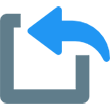
Step 7. Importing your data
Efficiently handling integration points, Shoreline ensures your imaged data is delivered seamlessly to your EMR or EHR system. This streamlined process is facilitated through our strategic partnerships with many leading vendors.
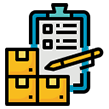
Step 8. Inventory of your documents and disposition
Practices, hospitals, or clinics often want to preserve physical paper for peace of mind. Shoreline offers secure, climate-controlled medical record storage for archiving your information for as long as needed. Additionally, we offer certified document destruction services ensure your data is appropriately discarded when the time comes.
Ready To Transform Your Document Experience?
Whether you'd like to get more office space by outsourcing your documents or decide that you'd like to automate your current document workflow, Shoreline is here to help!
Get A Free Quote